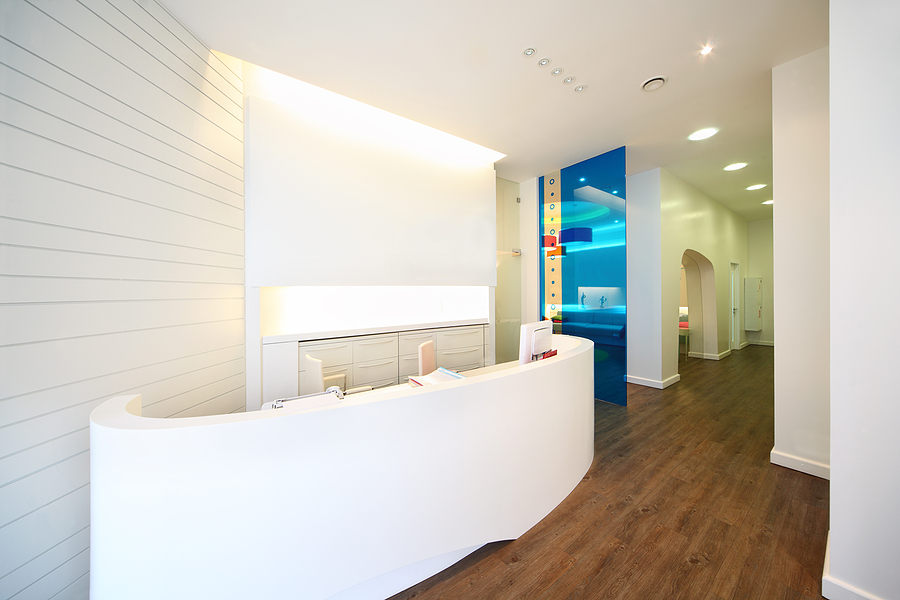Wall Options For my Dental Office
Posted by HJT Design

We all can agree that walls are physical vertical barriers used to divide or separate two or more spaces. What we may not agree on is what dimensions, materials, assemblies, and design features to use to make up the walls. For this blog we will concentrate on only the building’s interior walls.
We talked about this topic in depth on our weekly radio show.
COVID 19 being on everyone’s mind and dealing with infection controls can be overwhelming. Some of the thoughts may involve alteration of the existing office with removing, changing, and or adding new walls. It is important to note that not all walls are created equal and that the walls may serve multiple functions, therefore alteration to the office layout should be reviewed by design professionals to get the best possible result.
The main functions of walls are:
- To divide large spaces into two or more smaller spaces, partially or fully- meaning the walls can be a few feet high, hold down from the finish ceiling a foot or two, to the finished ceiling, or all the way to the roof structure.
- To isolate the material content of, or environmental condition between two adjacent spaces-meaning it could be used to isolate a storage room from a treatment room or a mechanical room from an office space.
- Direct the flow of human activities.
Walls are constructed to meet the needs and functions of the room/space such as moisture resistance, sound attenuation, fire resistance, impact resistance, etc.
Here is a list of typical types of walls you may find in your office:
Demising walls aka the walls separating two tenant spaces. Per building code, these are fire rated walls. If at all possible, avoid placing plumbing fixtures on demising walls.
Bearing walls, walls that are part of the structural system that carry the roof structure above.
Non-bearing walls, walls that are not part of the building’s structural assembly.
Pony walls, short walls about 3’-4’ high.
Sound walls, walls with sound attenuation insulation or sound dampening systems to manage sound transmission between rooms.
Fire rated walls, walls that are fire resistant per code requirements, typically full height to roof deck.
Metal frame glass walls, walls made of metal frames and glass panels.
Wet walls, walls with plumbing fixtures.
Feature walls, walls designed and finished to have aesthetic flares to differentiate it from the rest of the walls within the same space.
Living walls, walls of living plants.
Walls are assembled around the design criteria and specifications to meet the building code, functional need, structural or design requirements, and are referred to as assemblies. Depending on the building construction type, walls within commercial offices are typical assemblies of gypsum wall board and metal or wood studs in thickness and heights as needed. The good thing is, there are endless ways to beautify a wall way beyond a coat of colored paint.
Retrofitting existing semi-open treatment rooms into treatment rooms with functional doors should be reviewed by design professionals for building code compliance, which can have a major impact on the work needing to be done, for example:
Depending on the width of the existing treatment room, the width of the 12 o’clock cabinet and whether the treatment room has 1 or 2 doorways. It may not be feasible to install doors for the existing treatment rooms without increasing the width of the rooms. Adding doors to the existing treatment rooms may also trigger the Americans with Disabilities Act which mandates that the door (if only or the larger door, if two) must provide an unobstructed clear distance (18” on pull side and 12” on push side) from the door opening (latch side) to the closest vertical obstruction. In lieu of retrofitting all treatment rooms with new doors to be in compliance with the Americans with Disabilities Act, the local code officials may only require a limited number of treatment rooms to be compliant. It is worth having a conversation with the code officials to ascertain the scope of the proposed retrofitting.
Corridors are components of the egress route and wall assemblies delineating the corridor are often required to be fire rated assemblies. For dentist offices with semi-open treatment rooms the corridors are usually not designed/constructed as fire rated wall assemblies. However, enclosing the treatment room doorways may require the existing corridor walls to be upgraded to fire rated wall assemblies, including new fire rated doors.
Why Choose HJT
Your dental office is a direct representation of you, the dentist, and your visions. It’s important that it reflects you and the quality of care you provide to your patients. We welcome the opportunity to bring your visions to light through insightful designs that meet your clinical requirements and aesthetic criteria while optimizing efficiency and functionality for your practice’s everyday needs.
With our years of collective knowledge and experience we have a deep understanding of the functionality and unique needs within the dental industry. We invite you to contact HJT (866) 213-1268 to start the dialogue regarding a plan for your current or new office and how we can implement your unique visions. We look forward to talking with you soon.